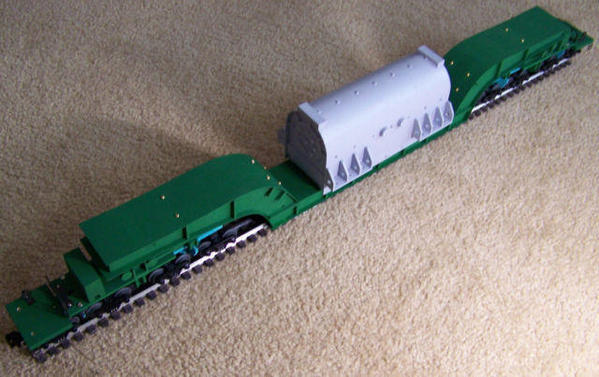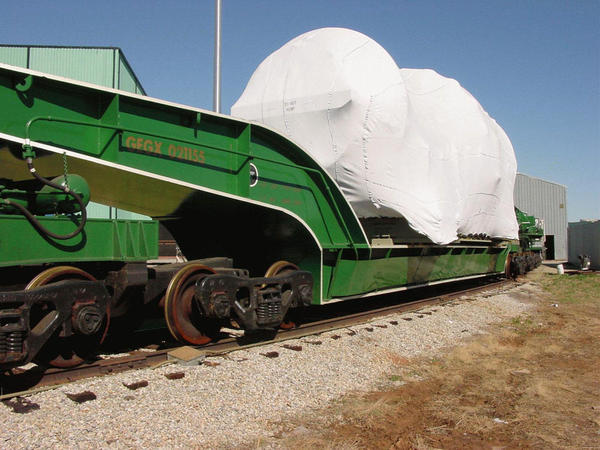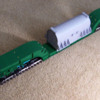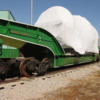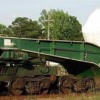O scale model of GEGX 21155 16-axle. depressed center flatcar. I call this car my "Green Monster". Even though this car is huge and heavy it tracks rather well because of the low center of gravity. The model is very sturdy since the depressed center is made of solid hardwood.
Prototype Data:
This depressed center flat car is owned by General Electric. It was built (along with a twin) in 1997 by the Atlas Car Division of Bliss-Salem Inc. It is assigned to the GE Gas Turbine Division, based in Greenville, SC.
The car has 16 axles and a capacity of 900,000 pounds.
Photos of the model and prototype are attached.




